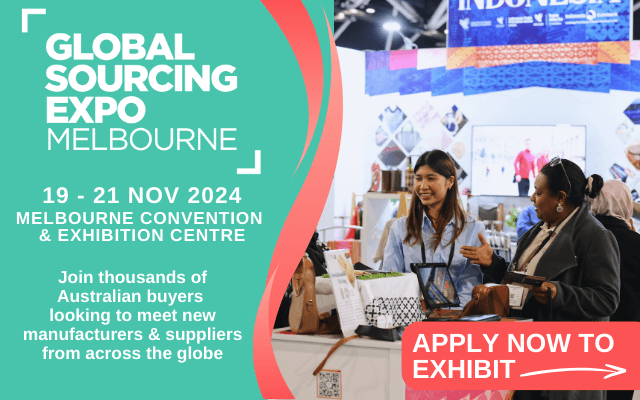As per recently published figures by UN, global fashion industry is responsible for almost 2-8 per cent of the world’s greenhouse emissions, consumes around 215 trillion litres of water per year, and is responsible for 9 per cent of microplastic pollution to our oceans1. These daunting figures are expected to worsen with hyper personalised products (a concept where businesses aim to rerack the shelves with new styles every 2-3 weeks) in an already existing fast fashion market.
The term, ‘fast fashion’ has recently gained popularity in last decade with emergence of online marketplaces and shifts in buying behaviour where fads are more frequent and common than ever. The consumers now want larger width of assortments for selection and are willing to refresh their wardrobes every month. Brand loyalty too, has taken a back seat in these times and the supply is under immense pressure to deliver competitive costs while maintaining faster TATs (turn-around-times). Though many brands operate on a fast fashion mode, they are further evaluating the possibilities to shrink product lead times and work closer to market, in accordance with changing nature of the business, where consumers are using these products 36 per cent less before discarding them, as compared to 15 years ago2.
In the past, low-end disruptions led many businesses into a downward spiral, characterised by piled-up inventories and stagnant cash flows. However, the future stakes are significantly higher, with their potentially disruptive and irreversible impact on the environment and its resources. This situation raises concerns and underscores the need for businesses to undergo radical changes in their operations to become sustainable.
Sustainability’s Rise and Challenges in Fast Fashion
Identified as one of the prominent industry-wide phenomena and a plausible next inflection point for the business of fashion, ‘sustainability’ is now making its way in the world of fast fashion at a rapid pace.
While the phenomenon itself is not recent and have been present in the lobbies since past couple of decades, post pandemic, many sustainable initiatives have gained significant momentum and are reshaping the industry.
We are now witnessing rise in awareness campaigns, mindful consumption, and a rapid shift towards a more responsible product lines from brands across the world. The industry is adapting to various sustainable practices including the use of recycled polyester, ozone treatment of denims, moving to BCI cotton and committing to recycled packaging materials, to name a few.
While many leading fashion houses and labels pride themselves in driving sustainable initiatives across their products and processes, the larger impact of these initiatives and their share to the business remain insignificant. Though there are certain brands which are dedicated to the cause and offer exclusive sustainable fashion, the commitment does not quite resonate as an industry wide practice, capable enough to move the needle.
Being sustainable, carries a much larger commitment to the cause, and demands a vision beyond product lines. It demands being conscious about what we produce, how we produce (or procure), and principally why do we produce.
It translates further to sustainable sourcing practices, i.e. buy plans that fall in sync with mindful consumption, processes that reduce all forms of waste, and business models that minimise carbon footprints.
Why, then, is such a prominent phenomenon only superficially leveraged, limited to the marketing of specific products and practices? One plausible roadblock we further explore is the structure of organisations and processes, which makes it exceedingly difficult to unite behind a common cause.
Readiness: Beyond Business as Usual
Usually, sustainability is a top-down strategy, driven by top management in any organisation. Such a change, undoubtedly, needs to be driven with high priority, and can only be imposed than be allowed to gradually emerge.
However, many leaderships often fail to identify sustainability as an organisation-wide change and instead consider it to be another initiative which can be driven along-with the BAUs (business as usuals).
Design processes, buy plans, margins, top and bottom-line targets, lead times, assortment plans, and many other metrices remain as is while businesses try to plug sustainable practices in action.
Effective along many dimensions, this approach however fails to address the underlying need for radical changes which shall positively impact processes and standard operating procedures (SOPs), across functions. BAUs often overpower these sustainability initiatives and organisations settle for bare minimums which then get limited to marketing campaigns and forum talks.
On the other hand, ‘readiness’ involves a broader approach, encompassing organisational processes and hierarchy. It also considers the psychological aspects of change, advising against merely following trends. Instead of solely focusing on making sustainability a behaviour-driving objective, similar to maximising profits or minimising costs, it stresses the importance of training, evolving, and recruiting individuals committed to the concept of sustainable profits. This approach challenges the widespread belief that profits and sustainability are mutually exclusive. Thus, readiness, in this context, signifies an organisation’s ability to adapt, taking into account its resources, structure, processes, and flexibility. A thorough examination is necessary before embarking on a shift towards sustainability.
Resource Management in Sustainable Transition
An organisation’s resources are scarce, valuable, non-fungible, and often not scalable. These resources include manpower, material, capacity, capital, and managerial attention. Diverting these resources can propel a business into either a vicious or virtuous cycle, depending on how the resources are reallocated and for what purpose. Traditionally trained manpower, well-established sourcing partners, and slow-moving cash flows due to rapid expansion often offer little room for reallocating these assets because of their specific nature. The primary objectives tied to these resources typically remain unchanged, even with the introduction of new initiatives.
Organisations must carefully evaluate which resources need to be deployed in advance. It is crucial to ensure that deploying resources for radical changes does not disrupt the existing ecosystem. Simply adding resources might not be beneficial, as it could create a separate ecosystem that is out of sync with the existing business and stakeholders, leading to further challenges in making progress.
Therefore, leadership must comprehend the inherent nature of the resources it intends to divert, deploy, or dedicate to such radical changes, as expecting resources to perform dual roles could be detrimental in the long run.
Organisational Structure and Adaptability
Little attention is often given to organisational structure – a crucial foundational element. Many organisations adopt structures that are prevalent among industry leaders, facilitating the hiring of skilled manpower and easing interactions with external stakeholders. However, a bespoke structure can complicate internal and external communications.
The fashion industry typically employs a functional structure, where individual departments are well-defined, and SOPs are explicitly outlined. Although this structure is highly effective in a mass production setting, it can become a significant obstacle to unified action when departments anticipate radical changes that could challenge their existing SOPs, positions, and power.
Therefore, identifying the most effective organisational structure to foster team congruence is vital. Such an understanding can assist organisations in navigating the unstable, complex, and rapidly evolving external environment.
Challenges of Integrating Sustainability in Operations
With the emergence of PLM (Product Lifecycle Management) and ERP (Enterprise Resource Planning) solutions, businesses aim to adapt to industry best practices but often neglect to assess whether their business models require such complex SOPs. While these systems address many inefficiencies, they can compromise an organisation’s overall agility and profitability. A significant number of resources are devoted to training, deploying, and maintaining these systems, making the processes resistant to change.
Managerial attention, a unique and invaluable resource crucial for any business’s innovation and growth, is consumed by maintaining these routine procedures. Many managers get caught up in advanced analytics, generating and reviewing reports that may not be necessary.
Ironically, as the industry moves towards sustainable practices, these systems remain designed to support fast fashion, contributing little to the adoption of new norms.
This situation calls for a re-evaluation of existing processes to streamline them as much as possible. Organisations need to anticipate how introducing new processes might impact current ones and resources, ensuring that they do not inadvertently create obstacles to sustainability rather than facilitating it.
Navigating Flexibility and Sustainability
An organisation can be highly flexible in terms of its own SOPs, resources, vision, and mission; however, it faces significant inflexibility when it comes to its external environment. Businesses must adapt to changing external conditions, with limited ability to operate solely on their own terms.
The external environment includes industry practices, regulations, contractual obligations, competition etc. The rapid rise of Direct-to-Consumer (D2C) brands and marketplaces has significantly pressured businesses to focus on minimising costs, as customers now have a perceived price ceiling they are unwilling to exceed. Brand loyalty and retention rates are under constant threat due to higher churn rates and low active customer numbers, leading to stagnant or minimal growth in brand basket sizes.
Competing on the same dimensions is becoming increasingly difficult. Therefore, brands are seeking new dimensions to dominate. Sustainability represents one such opportunity. This dimension is still evolving, and brands are striving to lead in this area, aiming to secure underlying profits. However, this requires an inward-out approach, given the instability of the external environment. Brands must carve out their own niche within the sustainability dimension, focusing significantly on research, development, scouting, and leveraging technologies that have yet to become mainstream. Moving from operations-focused to research-driven strategies is crucial for staying ahead of the curve.
This scenario is fascinating because brands cannot be flexible based solely on their vision or the external environment. Instead, they must be agile in anticipating future trends and leading change.
Sustainability: Securing Long-Term Profitability
The shift towards sustainability will ensure that those prepared to embrace sustainability as a radical, organisation-wide change will gain a significant advantage, securing enduring success and sustainable profits. With an increased focus on the environment, the industry might also face future regulations on manufacturing and retail, pushing businesses with outdated operating models out of the market.
Committing to sustainable sourcing, launching sustainable product lines, and managing waste may provide some short-term success; however, long-term profitability will depend on dominating this new dimension with a focus on readiness for change. Re-evaluating strategies at functional, industrial, and geopolitical levels to simulate plausible scenarios and preparing for significant challenges will be essential for businesses to thrive in what will soon be recognised as a ‘sustainable’ industry.
Businesses that are willing to understand and integrate sustainability beyond just product lines and sourcing will lead this new era with their agility, resilience, and a vision firmly focused on anticipating future developments.










Comments